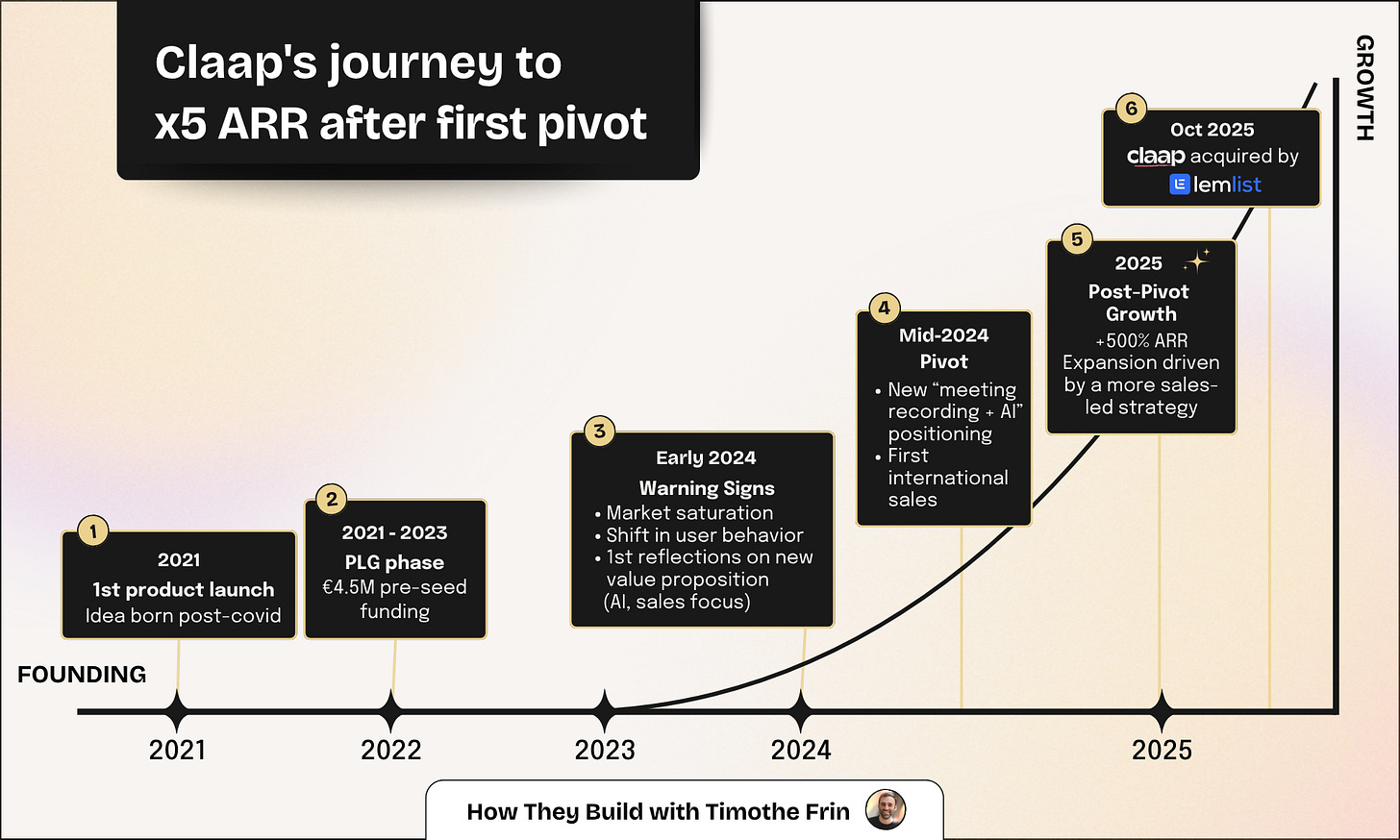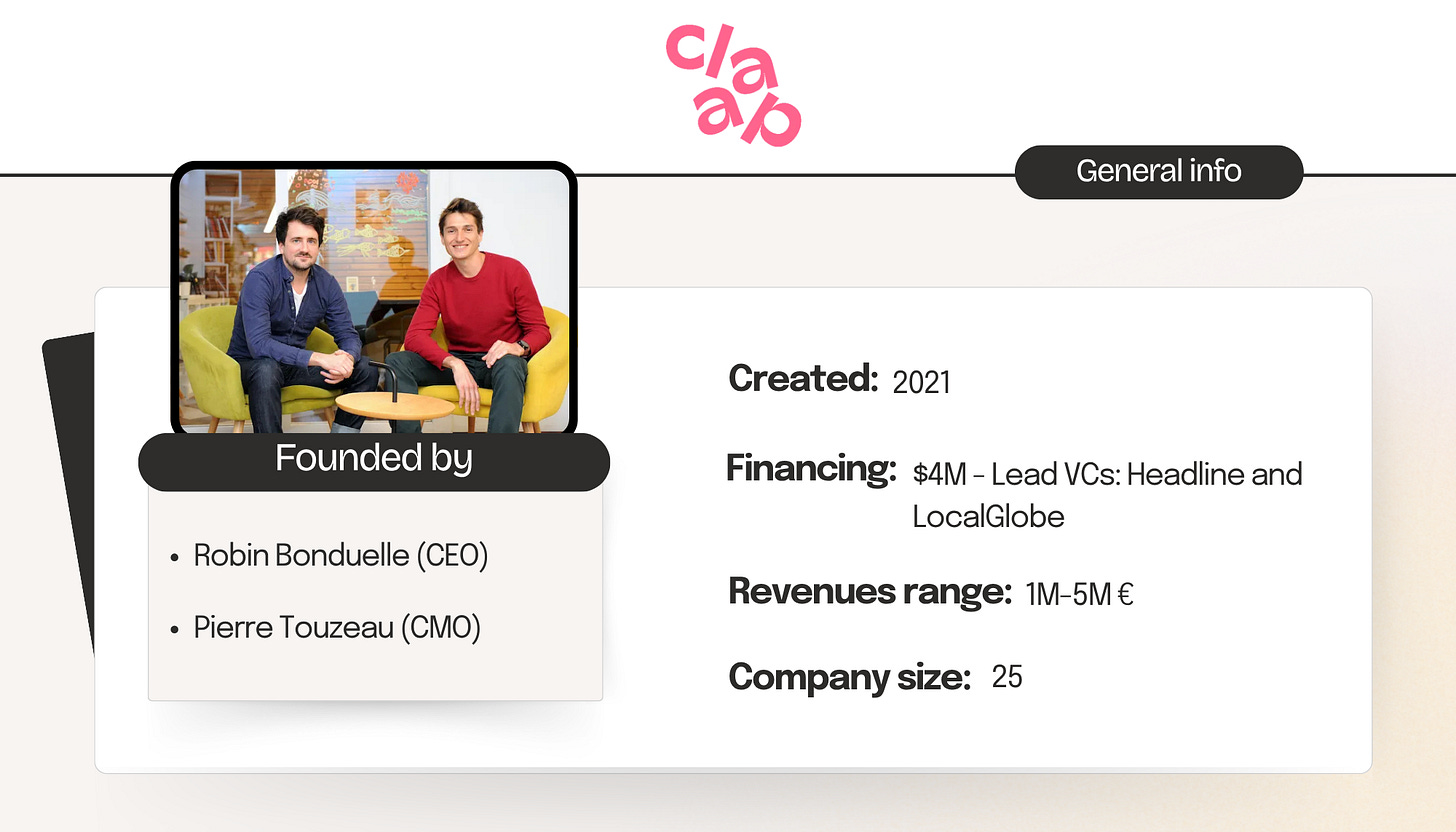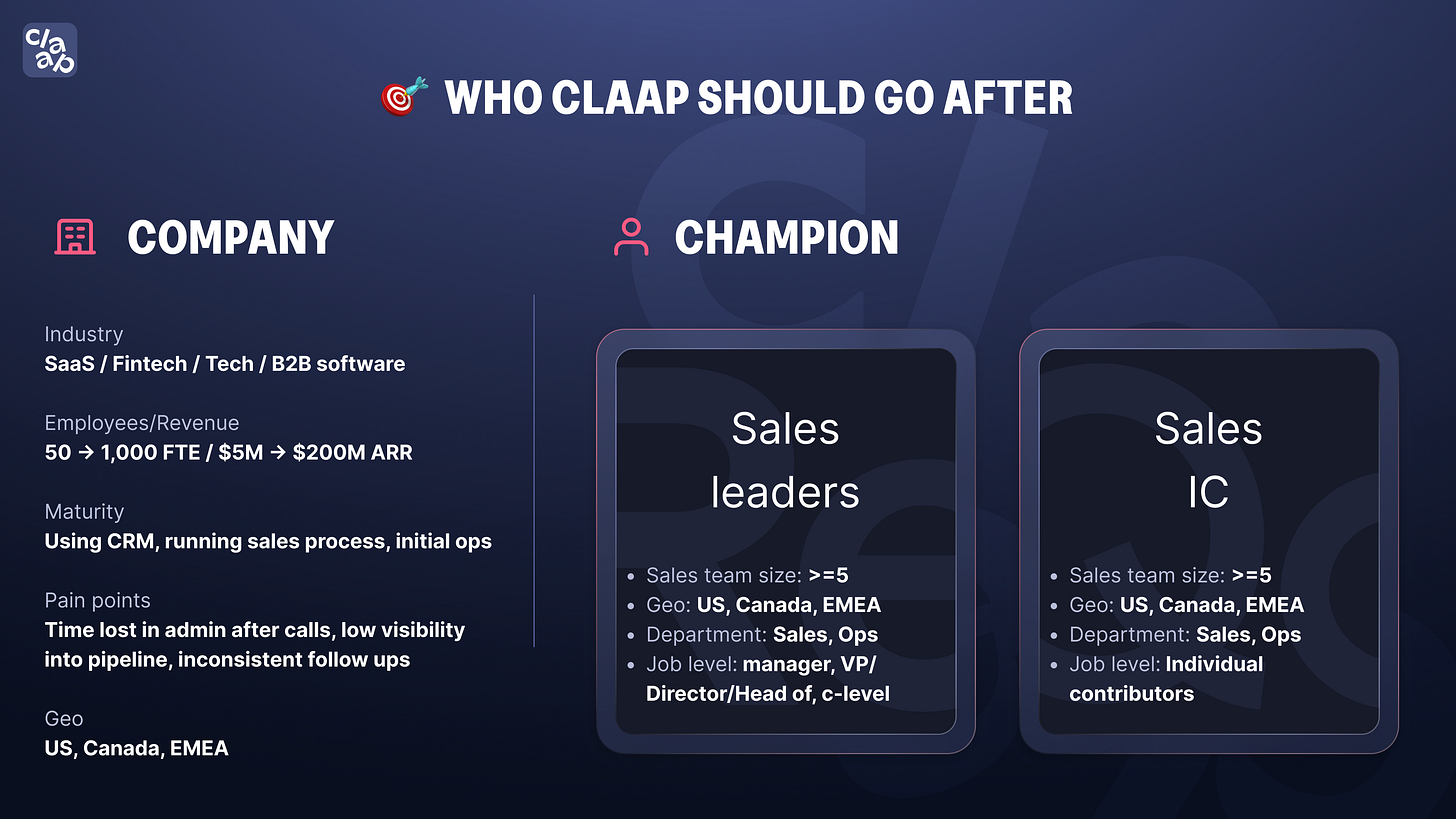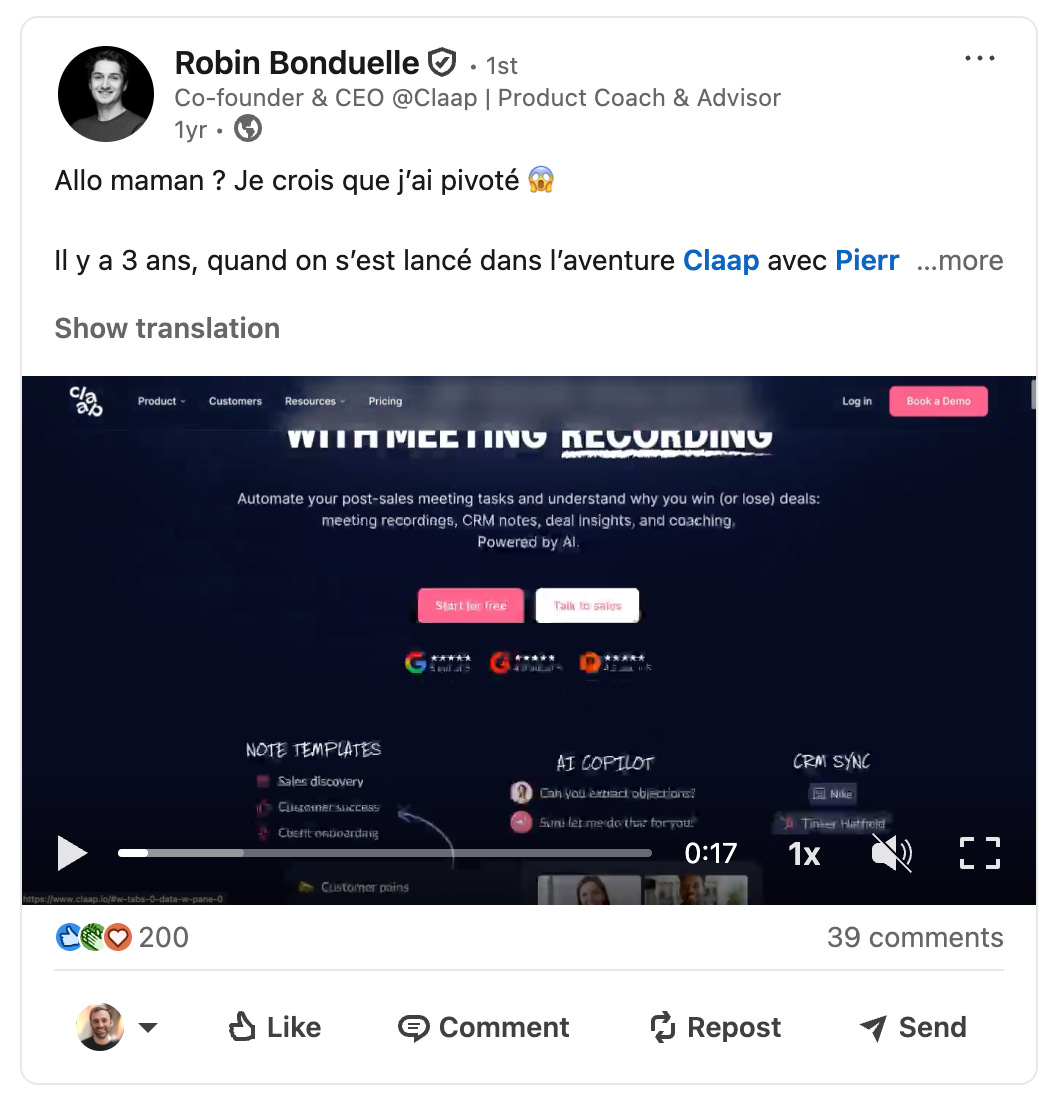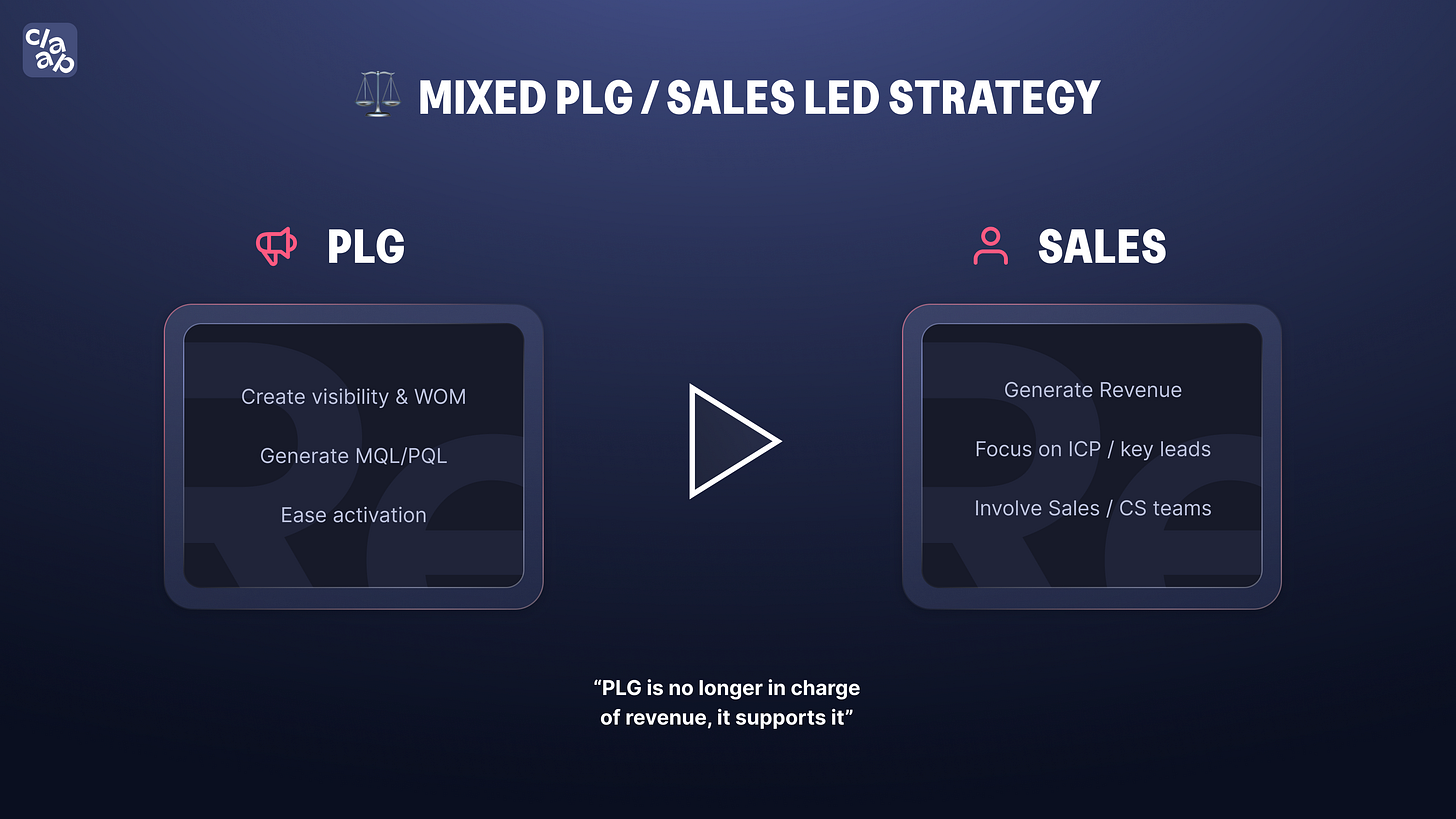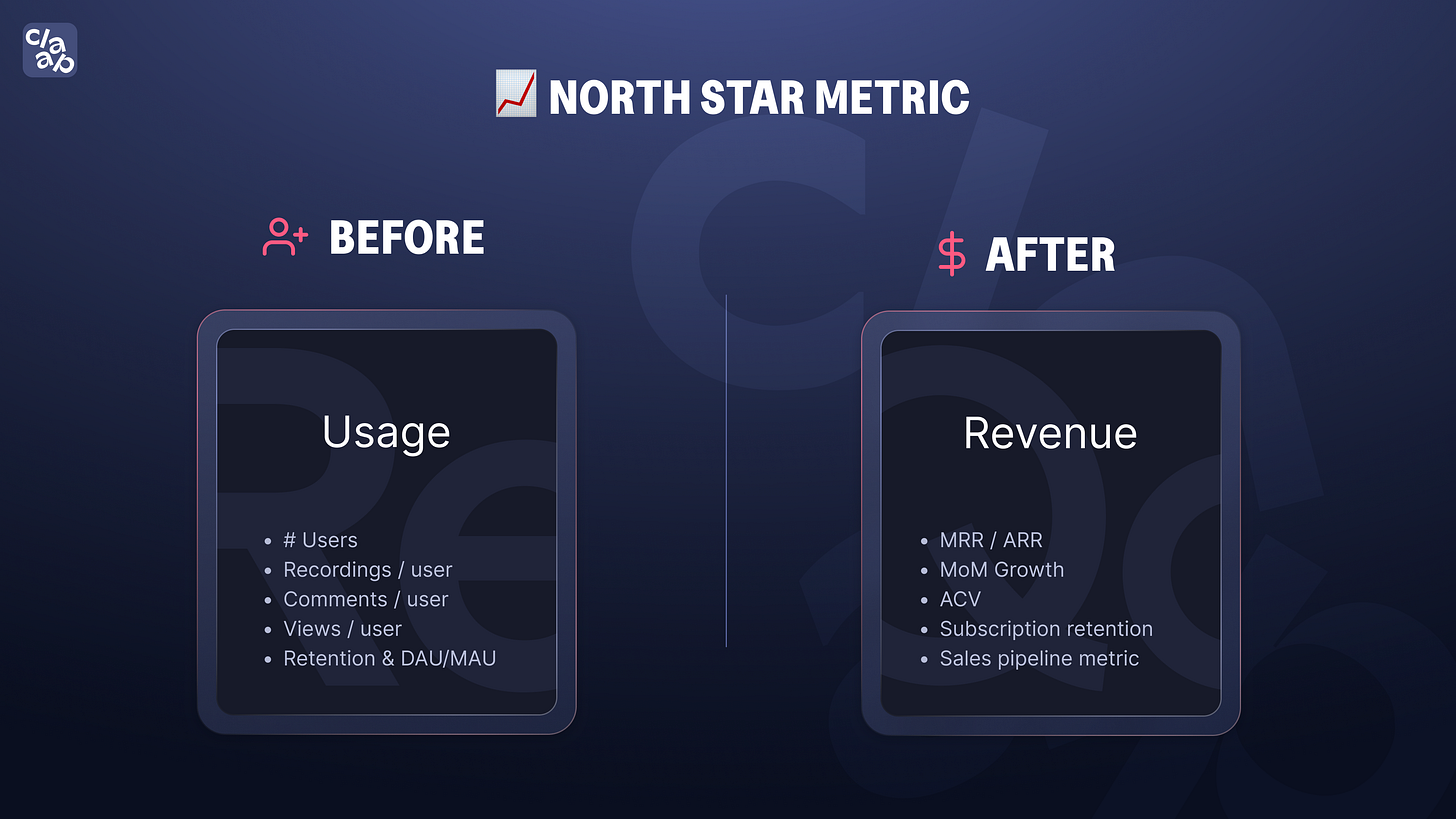How Claap reinvented its value proposition and ICP to drive explosive growth
Robin Bonduelle, CEO & cofounder of Claap, on pivoting Claap’s strategy to achieve rapid scale
Hey, I’m Timothe, cofounder of Stellar & based in Paris.
I’ve spent the past years helping 500+ startups in Europe build better product orgs and strategies. Now I’m sharing what I’ve learned (and keep learning) in How They Build. For more: My Youtube Channel (🇫🇷) | My Podcast (🇫🇷) | Follow me on Linkedin.
If you’re not a subscriber, here’s what you’ve been missing:
Claap was founded in 2021 by Robin Bonduelle and his team, initially aiming to reduce the volume of meetings through asynchronous video collaboration. Early traction included big-name accounts like Revolut and Qonto, yet the business model proved difficult to scale. The asynchronous video category, pioneered by Loom, lost momentum post-Covid, and Claap’s broad, horizontal positioning struggled to convert usage into sustainable revenue. By mid-2024, facing stagnant growth, Robin and his team decided to pivot. They refocused on sales teams, integrating meeting recording, AI-powered insights, and coaching into a dedicated platform.
This pivot became the company’s turning point: Claap generated 5x more revenue in one year than in its first three years combined, with monthly recurring revenue growing steadily and a new north star metric climbing more than 10% each month.
I sat down with Robin Bonduelle, CEO & cofounder of Claap, to discuss how he transformed the value proposition, narrowed the ICP, and rebuilt Claap’s trajectory.
Disclaimer: The organizational choices and technical solutions shared in this newsletter aren’t meant to be copied and pasted as-is. Always keep your company’s context in mind before adopting something that works elsewhere! 😊Finding the ignition point in user demand
One of Claap’s biggest lessons came from observing how people actually used the product. Originally designed for asynchronous updates, many users adopted it for meeting recordings. Roughly 20–25% of all videos were meetings, not short updates. Instead of forcing the original vision, Robin leaned into the data:
“We realized that between 20 and 25% of the videos recorded on the platform were actually meetings.” - Robin Bonduelle (Claap’s CEO)
Two key shifts drove the evolution of their ICP. First, the growing volume of recorded meetings led them to refocus the product on meeting productivity use cases. Then, they narrowed in on sales teams as the core persona — driven by their higher willingness to pay and their need to implement scalable, repeatable business and sales playbooks. This repositioning naturally pushed the product toward AI-generated insights, coaching, and automation to boost sales performance.
Adopt a ‘100-day survival’ mindset
When Claap’s growth stalled, the team needed a forcing function to break inertia. Even though the company still had significant cash runway, Robin deliberately introduced a strict 100-day frame for decisions to recreate the pressure of scarcity. If an initiative didn’t clearly help the company survive in 100 days, it was deprioritized. This was a key learning: without external constraints, there’s a real risk of stagnating in suboptimal options. By putting the team in a bootstrap mindset — even with cash in the bank — they created the necessary stress and urgency to make bold bets. This focus sharpened priorities around refining the ICP, improving the sales process, and doubling down on product-market fit.
“We were saying to ourselves, we have 100 days left. If a task isn’t essential for survival, we push it back.” explained Robin.
This urgency aligned the entire team on immediate outcomes, paving the way for the pivot.
Define the ICP with precision and discipline
Pre-pivot, Claap’s broad horizontal positioning meant the product tried to serve designers, PMs, HR, and finance teams alike. This diluted the value proposition and made adoption harder. The pivot deliberately narrowed the ICP to sales teams of 10–50 reps, integrated with their CRM, and needing coaching and automation. This sharper focus unlocked a repeatable go-to-market motion: qualification rates soared, and Claap now closes nearly 70% of well-qualified opportunities.
The big learning as founders was counterintuitive: keeping more options open doesn’t help the business — it slows it down. Growth came from closing doors, not opening them. Or as Robin puts it: “niche down, niche down, niche down.”
Build credibility with a narrative reset
To mark the pivot, Claap staged a “before/after” moment on June 28, 2024. Robin calls it their “before pivot / after pivot” moment. The team relaunched positioning, updated the product, and involved angels to amplify communication. This created a clean break for investors and prospects: growth was measured from the pivot date, not the three years of experimentation prior.
“We did a big communication push, got all our angels in the loop… forget everything that happened before, start counting growth from June 28.” - Robin Bonduelle.
This narrative reset helped Claap rebuild trust with VCs and establish fresh momentum.
Balance PLG mechanics with sales-driven growth
Robin highlights that Claap didn’t abandon product-led growth but reframed it as a marketing amplifier. PLG loops still bring inbound traffic and product sign-ups, but the real closing power now lies in the sales process. Self-serve flows like freemium and card-based upgrades remain, yet Claap added a structured sales team to qualify, upsell, and coach accounts. This hybrid model blends virality with high-touch sales, increasing both conversion and expansion rates.
Error: chasing usage over revenue
One of Claap’s biggest early mistakes was prioritizing vanity metrics like signups and usage instead of monetization. The team celebrated exponential growth in recorded videos (“claaps”) and viral adoption at companies like Revolut and Brevo, but revenue lagged.
“We were optimizing for usage… we put monetization aside, thinking it would come later. That was a mistake.” Robin admits.
The lack of a clear business model delayed the realization that PLG alone wouldn’t drive sustainable growth. The pivot corrected this by anchoring everything to monetization and ROI for a specific ICP.
Usage signals often reveal truer customer needs than original product vision — follow them relentlessly.
A 100-day survival frame creates urgency and clarity, cutting through distractions that slow pivots.
Narrowing ICP increases win rates by aligning product, sales, and marketing with one audience.
Narrative resets help regain investor trust and reframe growth trajectories after a pivot.
Hybrid GTM models that blend PLG and sales-driven approaches outperform pure PLG in B2B SaaS.
Avoid chasing vanity metrics; revenue-linked metrics are the only sustainable north star.
My full interview with Claap’s CEO
Dive deeper into this topic with Robin Bonduelle, cofounder and CEO of Claap, in my latest podcast episode:
Enjoyed this newsletter? Share it with your network using the button below—your support means a lot!


